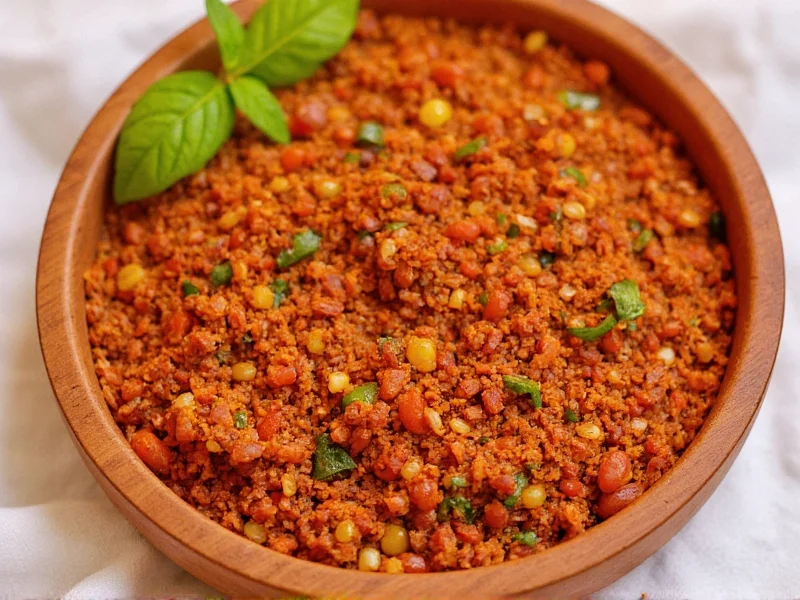Veggie spice has become a kitchen staple for home cooks seeking convenient flavor enhancement. This all-purpose seasoning blend delivers consistent taste without requiring multiple individual spice containers. Understanding its composition and proper usage unlocks its full potential in everyday cooking.
Core Components of Quality Veggie Spice
Authentic veggie spice blends share common foundational ingredients that create their distinctive flavor profile. The most effective combinations include:
| Primary Ingredients | Secondary Enhancers | Flavor Contributors |
|---|---|---|
| Garlic powder | Marjoram | Lemon zest |
| Onion powder | Sage | White pepper |
| Paprika | Dill | Coriander |
| Thyme | Fennel seed | Red pepper flakes |
| Oregano | Bay leaf | Mustard powder |
The precise ratio determines whether a blend leans toward Mediterranean, French, or American flavor profiles. High-quality mixes maintain a 3:2:1 ratio of base herbs to secondary enhancers to flavor contributors. When evaluating what is veggie spice made of in commercial products, check for fillers like maltodextrin or anti-caking agents that diminish flavor intensity.
Optimal Culinary Applications
Understanding the best way to use veggie spice in cooking transforms ordinary dishes into restaurant-quality meals. Unlike single-note seasonings, this blend works through multiple application methods:
- Dry rubs - Apply directly to vegetables before roasting (use 1 tsp per pound)
- Marinade component - Combine with olive oil and acid for proteins
- Finishing sprinkle - Add after cooking to preserve volatile aromatic compounds
- Base seasoning - Incorporate into soups, stews, and grain dishes
For roasted vegetables, toss with 1-2 teaspoons of veggie spice per pound before cooking. The blend's garlic and onion components caramelize beautifully, while herbs like thyme withstand high heat. When making veggie spice for roasted vegetables, add the seasoning after the initial 15 minutes of roasting to prevent burning delicate herbs.
Veggie Spice vs. Similar Blends
Many home cooks confuse veggie spice with other herb combinations. Key distinctions include:
- Italian seasoning - Contains more basil and rosemary, less paprika
- Herbes de Provence - Features lavender and fennel, minimal alliums
- Vegetable soup mix - Higher salt content with celery seed prominence
The critical difference between veggie spice vs vegetable seasoning lies in ingredient balance. True veggie spice maintains equal parts savory (garlic/onion), herbal (thyme/oregano), and sweet (paprika) elements. Many store-bought "vegetable seasonings" overemphasize salt and MSG while reducing herb content.
Creating Your Own Blend
Mastering a homemade veggie spice recipe ensures freshness and customization. Follow this professional ratio:
- Combine 3 tablespoons garlic powder
- Add 3 tablespoons onion powder
- Mix in 2 tablespoons paprika
- Incorporate 1.5 tablespoons each dried thyme and oregano
- Add 1 tablespoon basil and 2 teaspoons black pepper
- Optional: 1 teaspoon each marjoram, red pepper flakes, and lemon zest
Store in an airtight container away from light. Properly made blends maintain peak flavor for 4-6 months. For organic vegetable spice blend benefits, source certified organic ingredients to avoid pesticide residues common in conventional spice farming.
Storage and Freshness Preservation
Maximizing shelf life requires understanding how to store veggie spice properly. Follow these guidelines:
- Use amber glass containers instead of plastic to prevent flavor absorption
- Keep away from stove heat sources (ideal temperature: 60-70°F)
- Never store above 75% humidity
- Refresh blends every 6 months for optimal flavor
Test freshness by rubbing a small amount between fingers. If the aroma doesn't intensify significantly, the blend has lost volatile compounds and should be replaced. Proper storage prevents the common issue of veggie spice losing flavor prematurely.
Avoiding Common Usage Mistakes
Even experienced cooks make these errors with veggie spice:
- Adding at the beginning of long-cooking dishes (causes flavor degradation)
- Using excessive amounts that overwhelm delicate vegetables
- Storing in clear containers near windows (UV light destroys flavor compounds)
- Mixing with wet ingredients too early (causes clumping)
For steamed or boiled vegetables, add the spice after cooking rather than during. The moisture prevents proper flavor development. When creating healthy seasoning alternatives to salt, remember that quality veggie spice already contains natural flavor enhancers that reduce sodium needs by 30-40%.











 浙公网安备
33010002000092号
浙公网安备
33010002000092号 浙B2-20120091-4
浙B2-20120091-4